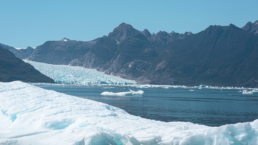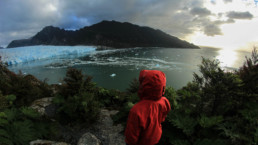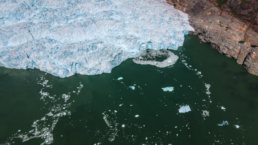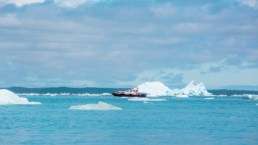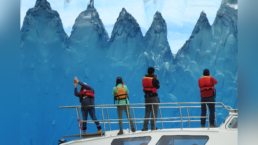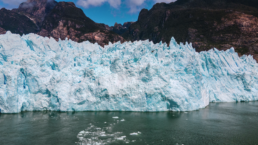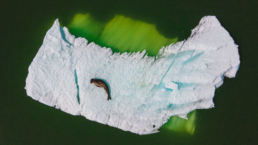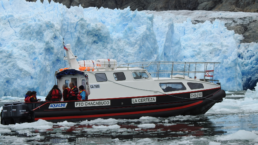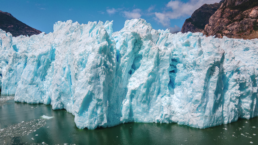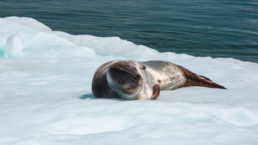El glaciar San Rafael es uno de los mayores glaciares de los Campos de Hielo Norte, en la Patagonia chilena. Alimenta a la laguna San Rafael y, a través de ésta, desagua en el canal Moraleda. Es el glaciar que alcanza el nivel del mar más cercano al ecuador terrestre.
En 1959, bajo la presidencia de Jorge Alessandri Rodríguez, se funda el Parque Nacional Laguna San Rafael, el cual alberga la formación lacustre y el glaciar del mismo nombre, en un territorio de aproximadamente 1.742.000 hectáreas. Es el parque nacional más extenso dentro de Chile y, por la importancia que implica su tamaño y biodiversidad, fue reconocido por la UNESCO como una Reserva Mundial de la Biósfera. Cercano al glaciar, puedes encontrar fauna endémica de la zona: desde cisnes de cuello negro y patos huala hasta lobos de un pelo.
¿Por qué este glaciar es tan reconocido? Debido a su gran tamaño: mide 2 kilómetros de ancho y 20 kilómetros de largo, que junto a una muralla gélida de cerca de 50 metros, lo convierten en uno de los más grandes en el territorio. Además, se adentra cerca de 200 metros en el océano pacífico y, como se ubica en los Campos de Hielo Norte, es el glaciar más cercano a la línea del Ecuador.
No podemos olvidar que el Glaciar San Rafael tiene cerca 30 mil años de antigüedad, por lo que no sólo es un foco turístico para la zona, sino que también atrae a cientos de científicos cada año para estudiar los efectos del cambio climático sobre estas masas de hielo. Estudios han revelado que el glaciar retrocede cerca de 74 metros cada año y, entre los años 1874 y 2016, ha perdido el 10% de su masa total producto del aumento de la temperatura global.
Actualmente se están haciendo esfuerzos por crear un registro nacional de glaciares (Chile cuenta con el 84% de estas masas presentes en Sudamérica) para proteger y estudiar más a fondo estas maravillas naturales que tenemos en nuestro país.
The San Rafael glacier is one of the largest glaciers in the Northern Ice Fields, in Chilean Patagonia. It feeds the San Rafael lagoon and, through it, empties into the Moraleda channel. It is the glacier that reaches the sea level closest to the Earth’s equator.
In 1959, under the presidency of Jorge Alessandri Rodríguez, the Laguna San Rafael National Park was founded, which houses the lake formation and the glacier of the same name, in a territory of approximately 1,742,000 hectares. It is the largest national park in Chile and, due to the importance of its size and biodiversity, it was recognized by UNESCO as a World Biosphere Reserve. Close to the glacier, you can find endemic fauna to the area: from black-necked swans and huala ducks to wolves.
Why is this glacier so renowned? Due to its large size: it is 2 kilometers wide and 20 kilometers long, which together with an icy wall of about 50 meters, make it one of the largest in the territory. In addition, it goes about 200 meters into the Pacific Ocean and, as it is located in the Northern Ice Fields, it is the closest glacier to the Equator line.
We cannot forget that the San Rafael Glacier is about 30 thousand years old, so it is not only a tourist focus for the area, but also attracts hundreds of scientists every year to study the effects of climate change on these masses of ice. Studies have revealed that the glacier retreats about 74 meters each year and, between the years 1874 and 2016, it has lost 10% of its total mass as a result of the increase in global temperature.
Efforts are currently being made to create a national registry of glaciers (Chile has 84% of these masses present in South America) to protect and further study these natural wonders that we have in our country.

